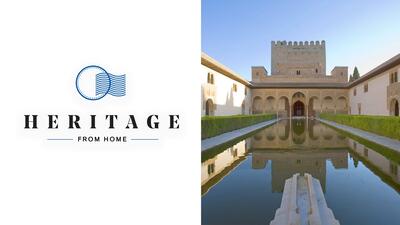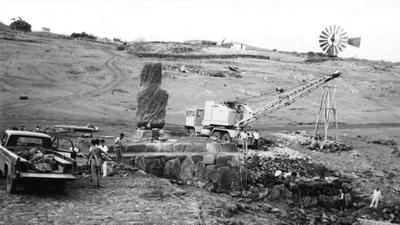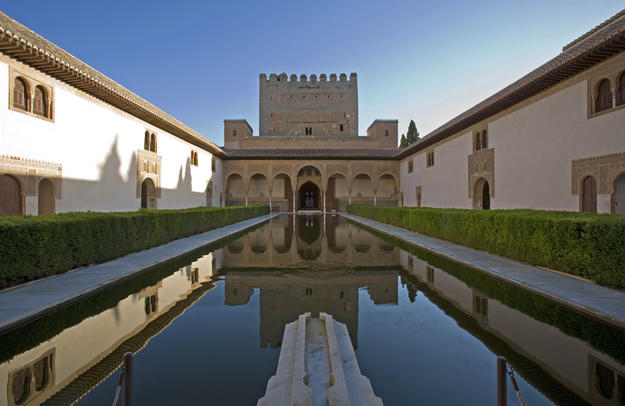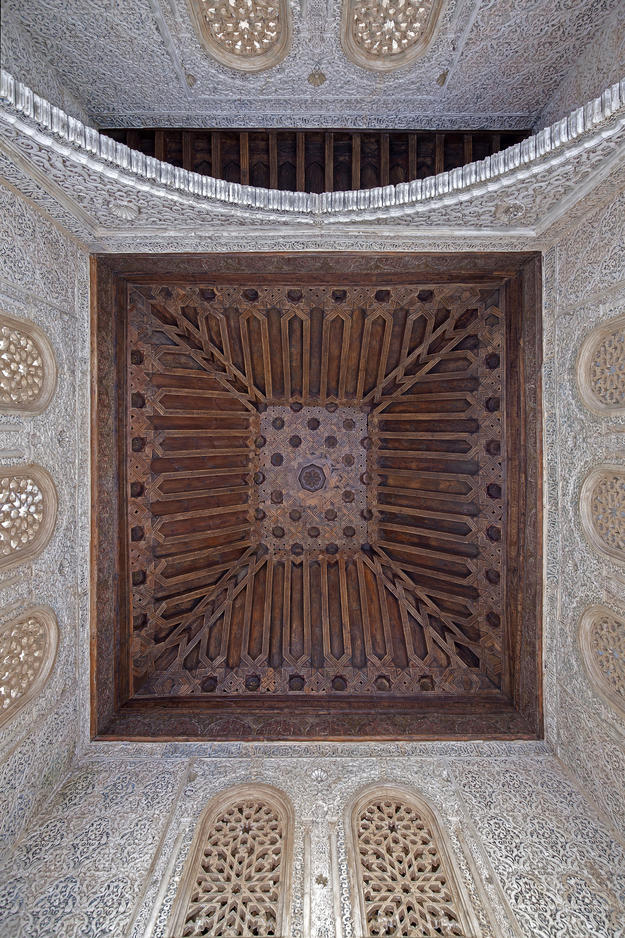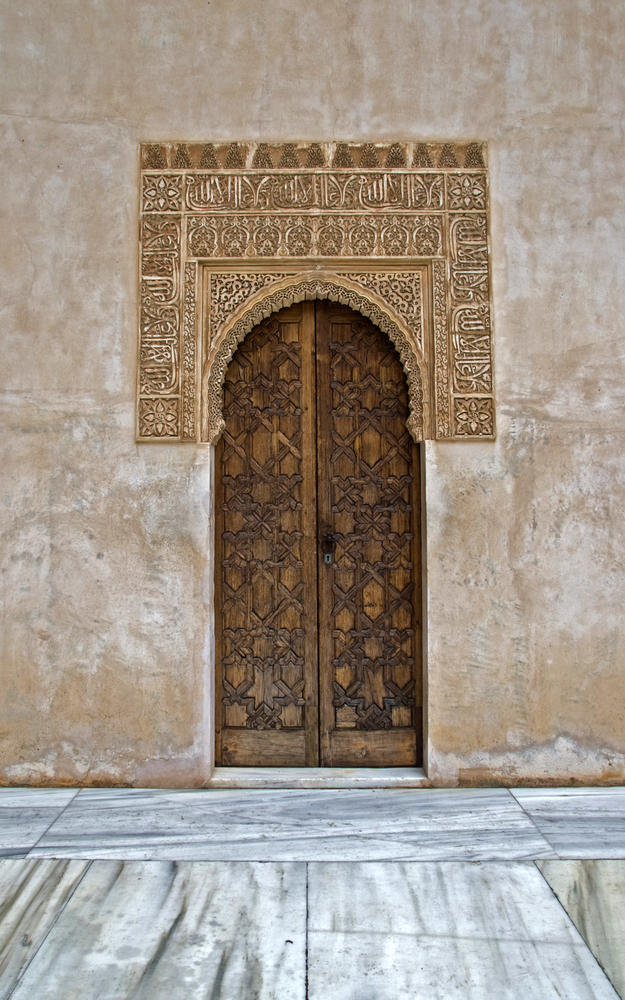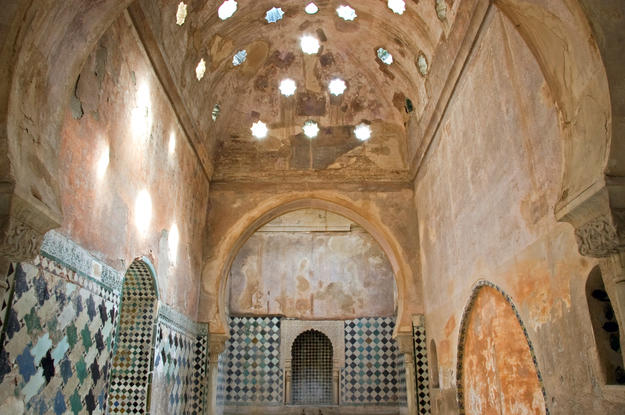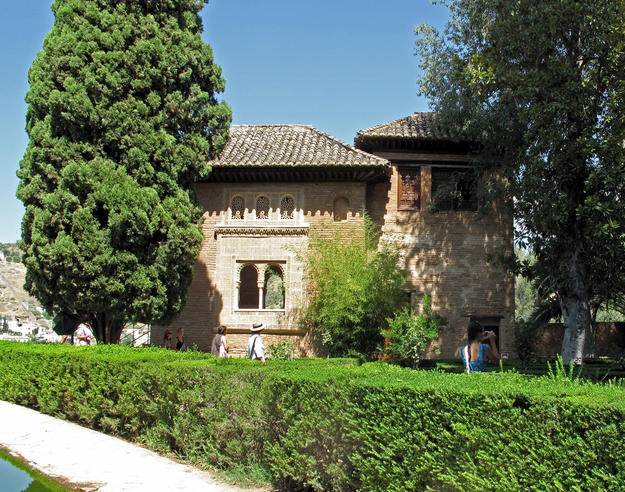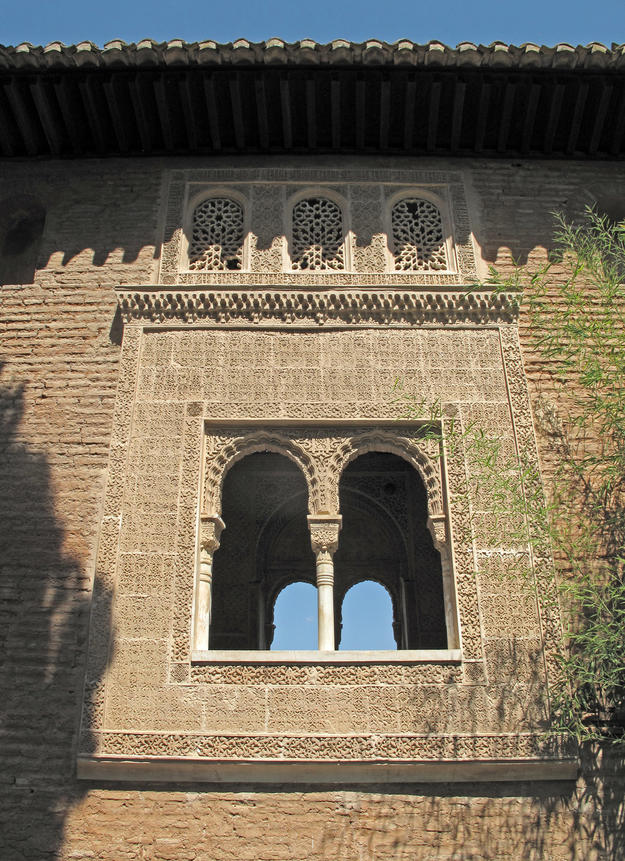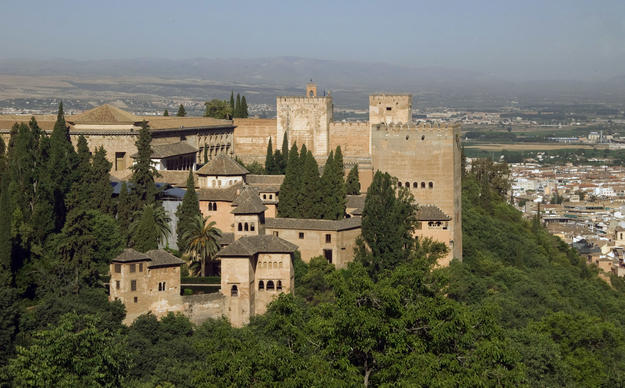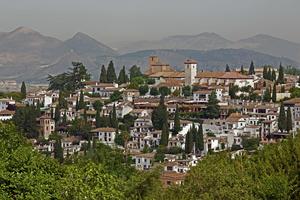Alhambra
The Alhambra was begun in the mid-thirteenth-century under Muhammad ibn al Ahmar, Emir of Granada, to serve as the palace and fortress complex of the Moorish Nasrid dynasty. It was completed a century later during the reign of Yusuf I. The Emirate of Granada was the last Muslim dynasty on the Iberian Peninsula to capitulate in the Catholic Reconquista, in 1492. Although modifications took place after the Nasrid dynasty’s departure, including the construction of a palace for Holy Roman Emperor Charles V within the complex in 1527 and the construction of a church on the site of the royal mosque, much of the Alhambra retains its Moorish character.
The Alhambra is the most important surviving remnant of the period of Islamic rule in the Iberian Peninsula (711–1492). It was inscribed on the World Heritage list in 1984 due to its universal beauty and exceptional expression of Moorish and Andalusian culture as well as for its ability to convey the history of the changes to the region over time through its architecture and decorative campaigns.
A partnership to restore a rare example of original coffering
The Oratorio del Partal was built during the reign of Sultan Yusuf I (1333-1354) as a chapel. Along with the Partal Arab houses on the opposite side of the portico as well as the House of Astasio, they form a group of buildings originally associated with the running of the Palace of the Partal, an important section of the Alhambra complex. From this set of auxiliary buildings, according to its use and considering its rich ornamentation, the oratorio is a building of greatest significance.
WMF worked with the Patronato de la Alhambra (Alhambra Trust) and the Junta de Andalucía (Regional Government) in the conservation of the ornate Mudéjar–style wooden ceiling, its supporting structure, and roof of the oratorio. The project consisted of three stages: structural restoration, constructive restoration and painting restoration. The Patronato also restored the decorative plaster walls. A team of experts carried out an existing conditions survey and polychromy analysis, followed by the full restoration of the rook. During a second phase of work, the team focused on the interior and exterior walls, restoring the arabesque plaster and removing previous interventions to recover the original surfaces of the building. The project was completed in 2017.
The Oratorio del Partal, a domestic palatine chapel facing Mecca, embodies the Alhambra’s Muslim roots, further emphasizing the importance of Arab influence in the southern Iberian Peninsula and highlighting the region’s history of Muslim rule. However, the chapel’s importance does not only stem from its use as a religious site, but also from the rich ornamentation of its architecture.
In October 2019, WMF alongside the Junta de Andalucia received the prestigious Grand Prix in Conservation at the European Heritage Awards / Europa Nostra Awards, for our work at the Oratorio del Partal.
A restoration campaign at the Alhambra's Patio de los Leones and the historic Albaycin
With support from American Express, World Monuments Fund collaborated with the Patronato de la Alhambra y Generalife on a new restoration campaign that began in 2018. Interventions addressed conservation issues at a group of structures in the Alhambra and the historic Albaycin district. The sites include Horno de Oro, part of the Moorish Houses of Granada (a 1996 World Monuments Watch site); the Bañuelo, one of the oldest and best conserved Arab public baths in Spain; the upper floor of the Dar al Horra Palace in the Albaycin, the former residence of sultan queen Aixa; and the Patio de los Leones (Court of the Lions), the most iconic and most photographed place in the Alhambra.
World Monuments Fund's work at Alhambra has been made possible, in part, by support from The Robert W. Wilson Charitable Trust, the Danny Kaye and Sylvia Fine Kaye Foundation, and American Express.
Videos
